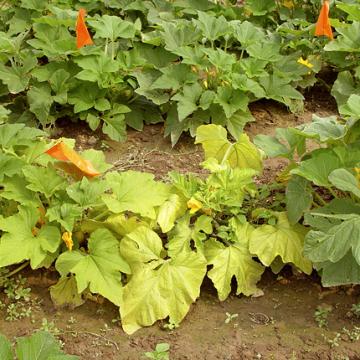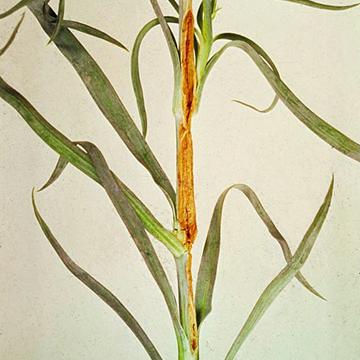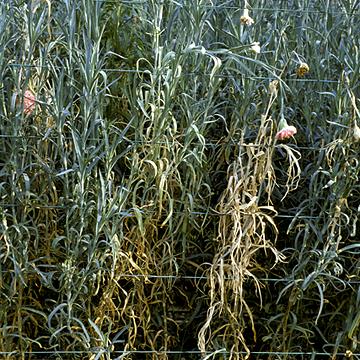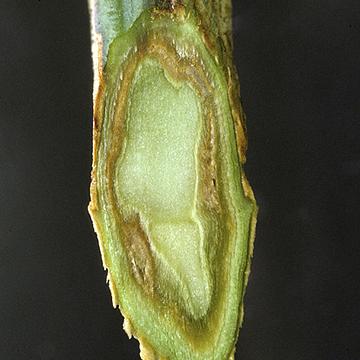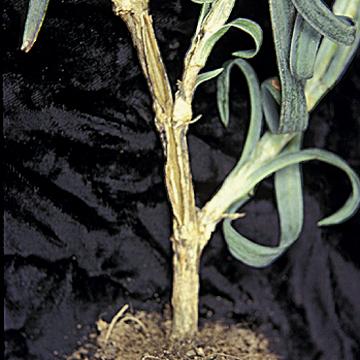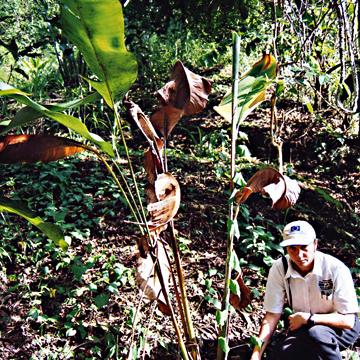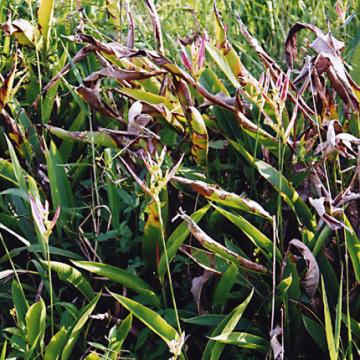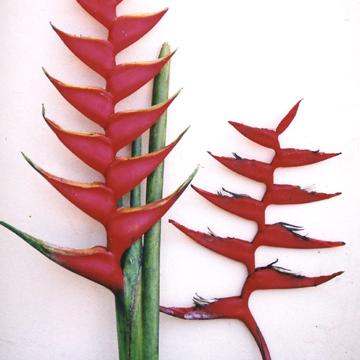DISEASE: Aster yellows
HOST: Squash
Diagnostic characteristics for the disease are yellowing of young leaves, proliferation of secondary shoots, and rigid erect habit. Leaves are misshapen and smaller than normal and have stiff, thick laminae.
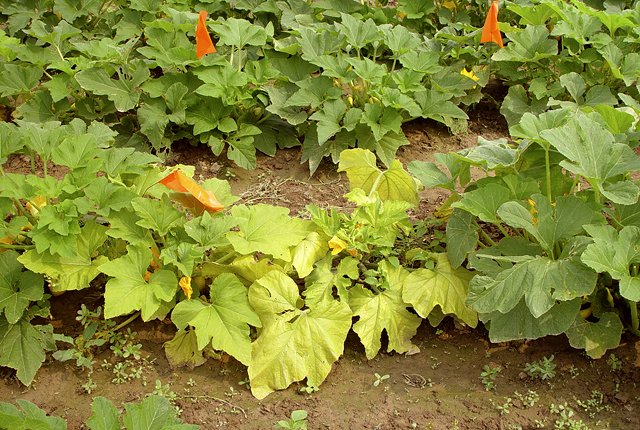
Aster yellows | Squash
DISEASE: Aster yellows
HOST: Squash (Cucurbita sp.)
PATHOGEN: 'Candidatus Phytoplasma asteris'
PATHOGEN SYNONYM: Phytoplasma Aster yellows group
SOURCE: S. Miller
DISEASE: Bacterial wilt
HOST: Carnation
Carnation stem with cankers and cracks. Yellow sticky bacterial slime is often seen.
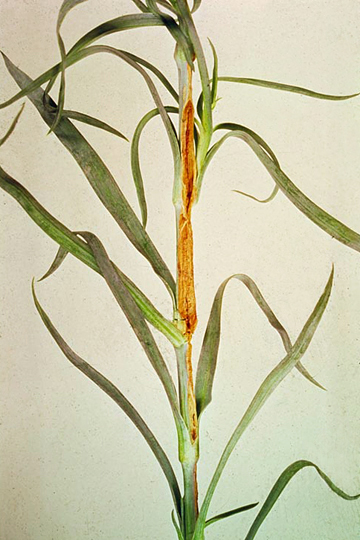
Bacterial wilt | Carnation
DISEASE: Bacterial wilt
HOST: Carnation (Dianthus caryophyllus)
PATHOGEN: Burkholderia caryophylli
PATHOGEN SYNONYM: Pseudomonas caryophylli
SOURCE: E. Hellmers, Royal Veterinary & Agricultural University
DISEASE: Bacterial wilt
HOST: Carnation
Severely diseased and withered plants.
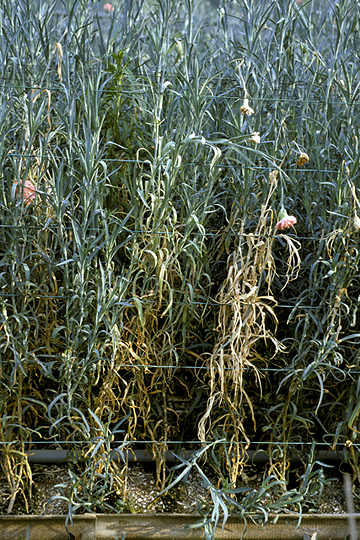
Bacterial wilt | Carnation
DISEASE: Bacterial wilt
HOST: Carnation (Dianthus caryophyllus)
PATHOGEN: Burkholderia caryophylli
PATHOGEN SYNONYM: Pseudomonas caryophylli
SOURCE: T. Saito, M. Goto
DISEASE: Bacterial wilt
HOST: Carnation
Sliced stem with discolored vascular bundles.
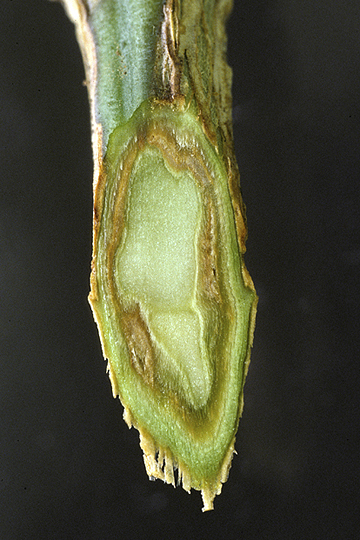
Bacterial wilt | Carnation
DISEASE: Bacterial wilt
HOST: Carnation (Dianthus caryophyllus)
PATHOGEN: Burkholderia caryophylli
PATHOGEN SYNONYM: Pseudomonas caryophylli
SOURCE: T. Saito, M. Goto
DISEASE: Bacterial wilt
HOST: Carnation
Systemic infection caused cracking and necrosis of the stem.
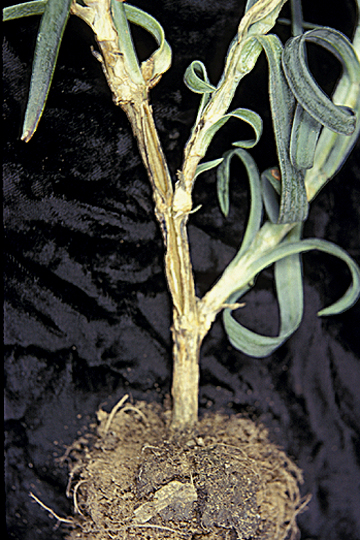
Bacterial wilt | Carnation
DISEASE: Bacterial wilt
HOST: Carnation (Dianthus caryophyllus)
PATHOGEN: Burkholderia caryophylli
PATHOGEN SYNONYM: Pseudomonas caryophylli
SOURCE: R. Raabe
DISEASE: Bacterial wilt
HOST: Heliconia
Wilted and dying heliconia plant.
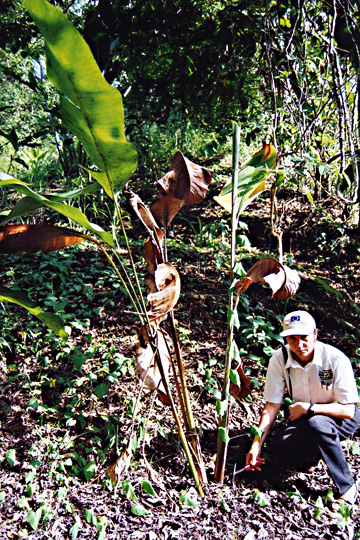
Bacterial wilt | Heliconia
DISEASE: Bacterial wilt
HOST: Heliconia (Heliconia sp.)
PATHOGEN: Ralstonia solanacearum
PATHOGEN SYNONYM: Pseudomonas solanacearum
SOURCE: I. Buddenhagen
DISEASE: Bacterial wilt
HOST: Heliconia
Heliconia spathes with wilt and leaf necrosis.

Bacterial wilt | Heliconia
DISEASE: Bacterial wilt
HOST: Heliconia (Heliconia sp.)
PATHOGEN: Ralstonia solanacearum
PATHOGEN SYNONYM: Pseudomonas solanacearum
SOURCE: I. Buddenhagen
DISEASE: Bacterial wilt
HOST: Heliconia
Heliconia stalk with discolored base.
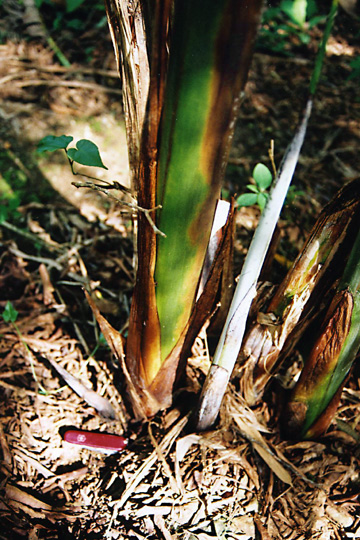
Bacterial wilt | Heliconia
DISEASE: Bacterial wilt
HOST: Heliconia (Heliconia sp.)
PATHOGEN: Ralstonia solanacearum
PATHOGEN SYNONYM: Pseudomonas solanacearum
SOURCE: I. Buddenhagen
DISEASE: Bacterial wilt
HOST: Heliconia
Spathe of heliconia infected with bacterial wilt (right) compared with healthy spathe.
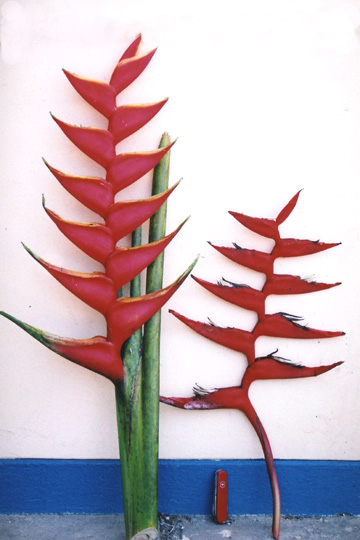
Bacterial wilt | Heliconia
DISEASE: Bacterial wilt
HOST: Heliconia (Heliconia sp.)
PATHOGEN: Ralstonia solanacearum
PATHOGEN SYNONYM: Pseudomonas solanacearum
SOURCE: I. Buddenhagen


